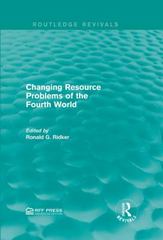Question
Q1. If the price of a haircut is $15, the number of haircuts provided is 125. If the price rises to $30 per haircut, barbers
Q1. If the price of a haircut is $15, the number of haircuts provided is 125. If the price rises to $30 per haircut, barbers will work much longer hours, and the supply of haircuts will increase to 200. Instructions: Round your answer to two decimal places. The price elasticity of supply for haircuts between $15 and $30 using the mid-point method is (?)
Q2.a. If price elasticity of supply is 1.7 and price increases by 2 percent, quantity supplied will (circle to the right one) increase decrease by (circle to the right one) > 2 percent < 2 percent .
b. If price elasticity of supply is 0.9 and price decreases by 2 percent, quantity supplied will (circle to the right one) increase decrease by (circle to the right one) < 2 percent > 2 percent .
Q3. a. If price elasticity of demand is -2.1 and price increases by 2 percent, quantity demanded will (circle to the right one) increase decrease by (circle to the right one) 2 percent < 2 percent > 2 percent
b. If price elasticity of demand is -0.8 and price decreases by 2 percent, quantity demanded will (circle to the right one) increase decrease by (circle to the right one) > 2 percent < 2 percent 2 percent
Q4. If price increases by 10 percent and quantity demanded decreases by 15 percent, demand is (circle to the right one) inelastic unit-elastic elastic
Q5. Suppose the price of peanut butterrises from $1 to $2 per jar. Instructions: Round your answer to three decimal places and include a negative sign if appropriate. a. The quantity of jellypurchased falls from 20 million jars to 15 million jars. The cross-price elasticity of demand between peanut butter and jelly using the mid-point method is (?) . The goodsare (circle to the right one) complements substitutes .
b. The quantity of jellypurchased rises from 15 million jars to 20 million jars. The cross-price elasticity of demand between peanut butter and jelly using the mid-point method is (?) . The goodsare (circle to the right one) complements substitutes
Step by Step Solution
There are 3 Steps involved in it
Step: 1

Get Instant Access to Expert-Tailored Solutions
See step-by-step solutions with expert insights and AI powered tools for academic success
Step: 2

Step: 3

Ace Your Homework with AI
Get the answers you need in no time with our AI-driven, step-by-step assistance
Get Started


